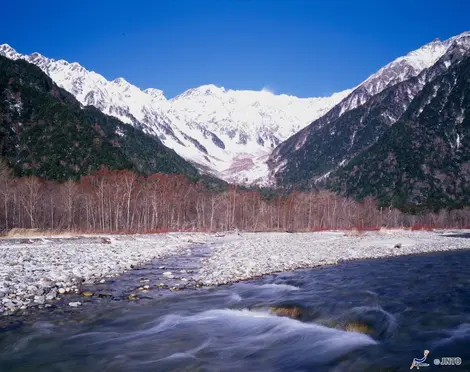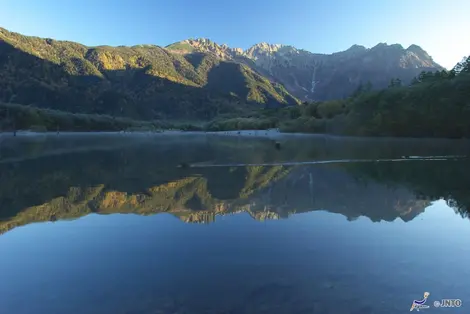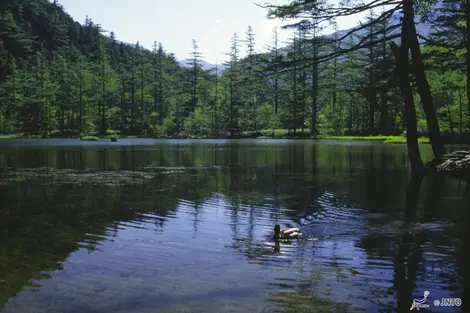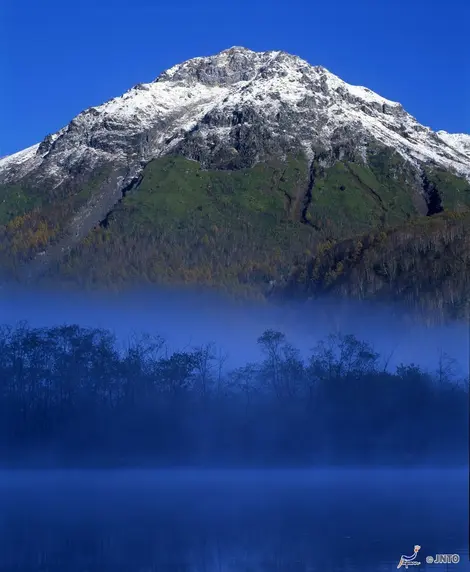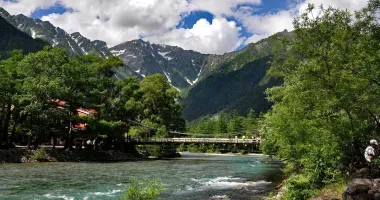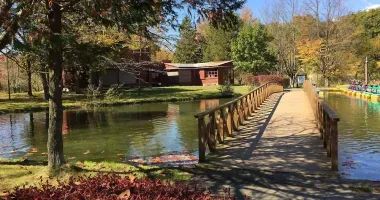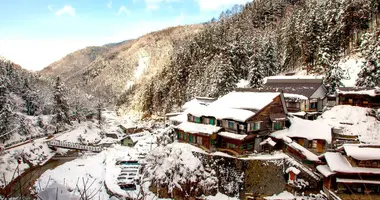Kamikochi 上高地
- Published on : 14/08/2020
- by : A.L.
- Youtube
Hiking in the Japanese Alps
Located in the heart of the Japanese Alps, Kamikochi valley remains, for those lucky enough to have gone there, a lasting memory.
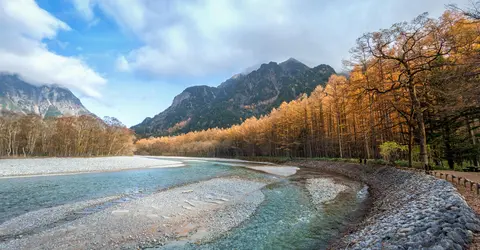
Kamikochi valley
mendhak
The Alps in Japan?
Yes, Japan also has Alps! In 1998, the entire world could watch the world's best winter sportsmen compete for in the Nagano Winter Olympics, the "capital" of the area and home of the Japanese Alps.
It was Walter Weston (1861-1940), an English missionary, who introduced recreational mountaineering in Japan. He also popularized the term "Japanese Alps" after publishing the book 'Mountaineering and Exploration in the Japanese Alps'. In the heart of the Kamikochi Valley you will find a plaque dedicated to him, the man who hugely influenced this region.
The Kamikochi Valley is located in the Chubu Sangaku National Park (中部山岳国立公園). It's a vast area, straddling four prefectures: Toyama, Gifu, Nagano and Niigata. But the valley itself lies exclusively in Nagano Prefecture, far west.
The Japanese Alps are unique in that they offer a different vision of Japan: here you can enjoy the majesty of its great spaces and heights. In addition, for summer visitors, the fresh and dry climate of the region contrasts with the stifling heat found in the rest of Japan.
The Valley of Wonders
Kamikochi literally means "highland" or "upland". It is a remote valley of the Hida Mountains (飛騨山脈). Between 1,400 and 1,600 meters above sea level, it extends fifteen kilometers. The surrounding mountains can exceed 3,000 meters. It is designated as cultural heritage site of Japan; rightly so, as Kamikochi is gorgeous!
A river, the Azusa-gawa (梓川) flows through the valley and meets Lake Taisho (大正池), whose clear waters reflect the sky and clouds. The presence of marshes and thick forests also combine to create a magical atmosphere. Breathtaking!
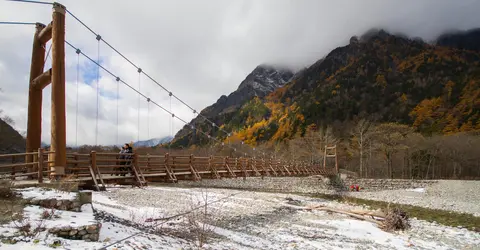
Myojin Bridge in the Kamikochi Valley
Kalexander2010
The kingdom of hiking
The Kamikochi Valley is open to visitors from April to November. Here, walkers of all levels are catered for. A relaxed family walk or alpine hiking for the more experienced, anything is possible.
A typical day in Kamikochi may look like this: start around Lake Taisho (大正池), then walk the Azusa River to the Myojin bridge (明神橋) upstream. This walk takes a few hours and should be achievable for everyone, because the terrain is not particularly rugged or steep - this is what explains the presence of the many swamps and small ponds in the valley.
Lake Taisho is actually rather recent, as it was only formed in 1915, by the eruption of Yake volcano (焼岳) that damaged the Azusa River. Today, you can still see broken trees emerging from the pond. Remains of terrestrial flora, now underwater.
A little further upstream, shortly after Lake Taisho, is Tashiro pond (田代池). Surrounded by swamps, it offers dreamy scenery with fog swirling over the water.
Near the bus station in the center of the plateau is Kappabashi bridge (河童橋 kappa bridge, kappa are mythical creatures). Many hiking trails are accessible around this beautiful suspension bridge. Some lead to the peaks of the mountains proudly rising all around the valley.
Nature lovers will not be disappointed - all the trails offer magnificent natural landscapes. Expect to walk along the fields of rhododendrons (and Japanese azaleas) and encounter monkeys and many species of birds.
Beauty is preserved in Kamikochi through it having relatively few tourist facilities. In the valley you'll find only half a dozen hotels (including the prestigious Imperial Hotel, opened in 1933) and a limited number of souvenir shops - unusual for Japan!





